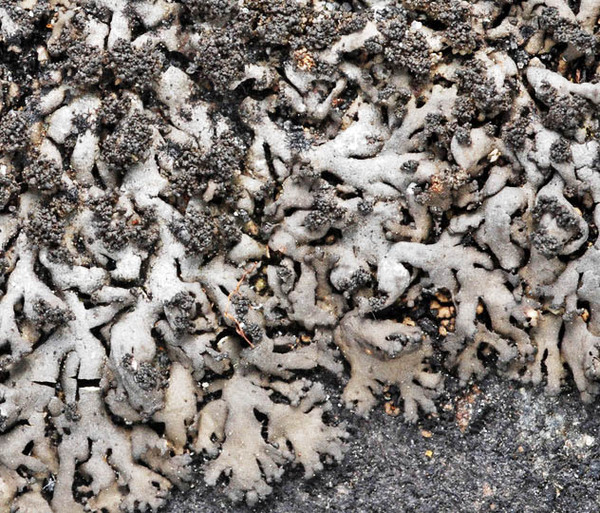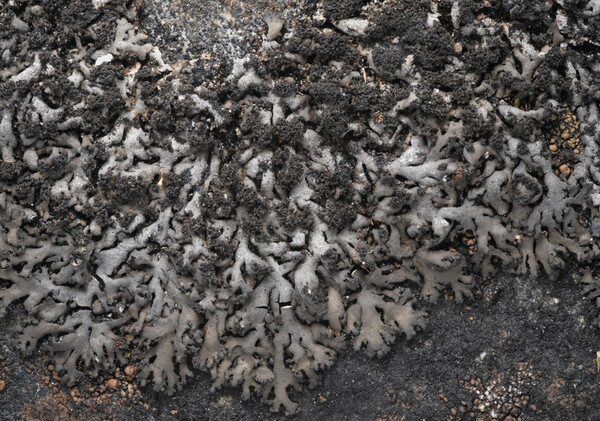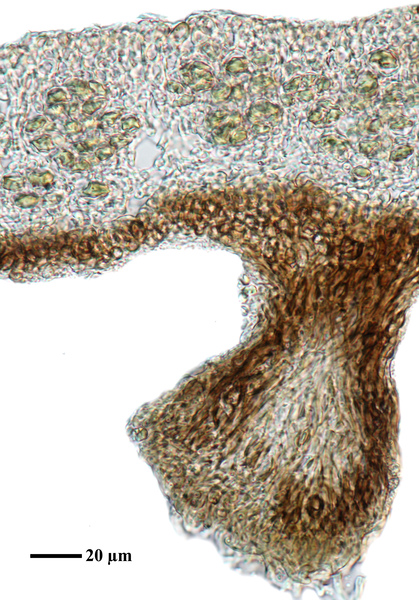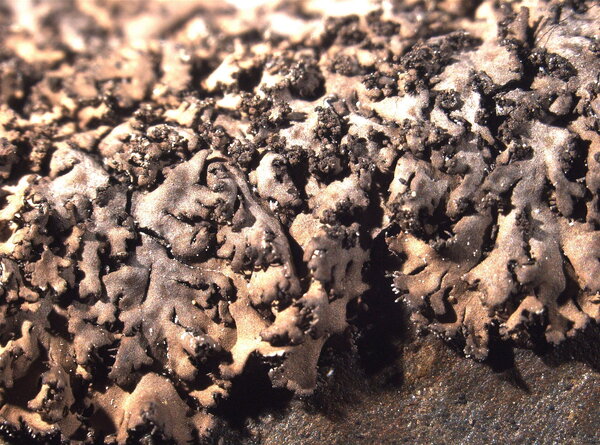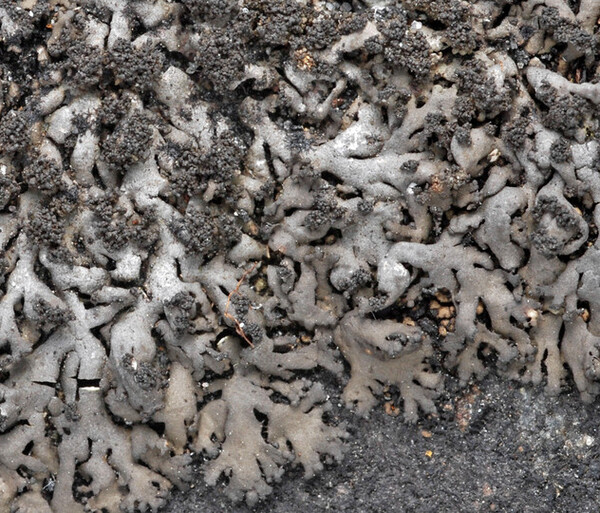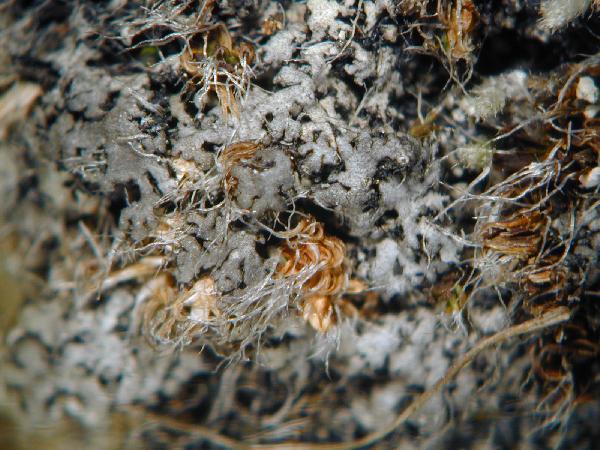Phaeophyscia sciastra (Ach.) Moberg
Symb. Bot. Upsal., 22, 1: 47, 1977. Basionym: Parmelia sciastra Ach. - Meth. Lich. Suppl.: 49, 1803.
Synonyms: Hagenia obscura var. sciastra (Ach.) Bagl. & Carestia; Physcia lithotea auct.; Physcia sciastra (Ach.) Du Rietz
Distribution: N - VG, Frl, Ven (Nimis 1994), TAA (Nascimbene & al. 2022), Lomb, Piem (Piervittori 2003, Isocrono & al. 2004), VA (Piervittori & Isocrono 1999, Matteucci & al. 2008c, 2015c), Emil (Fariselli & al. 2020), Lig. C - Tosc, Marc (Nimis & Tretiach 1999), Umb (Nimis & Tretiach 1999, Ravera & al. 2006), Laz (Nimis & Tretiach 2004), Abr (Nimis & Tretiach 1999, Gheza & al. 2021), Mol (Nimis & Tretiach 1999, Caporale & al. 2008), Sar (Neuwirth 2018). S - Camp (Aprile & al. 2003b), Pugl (Nimis & Tretiach 1999), Bas (Nimis & Tretiach 1999), Cal (Puntillo 1996), Si.
Description: Thallus foliose, heteromerous, dorsiventral, narrow-lobed, closely attached, forming orbicular to irregular, up to 5 cm wide rosettes. Lobes linear and discrete 0.2-0.6(-1) mm broad, flat to irregularly convex, grey to almost black in sun-forms, usually epruinose, sometimes with a whitish epinecral layer in the center, with granular to subcylindrical, darker, pseudocorticate isidia arranged in irregular, short to elongate clusters (sometimes appearing like isidioid soredia). Lower surface black, sometimes paler at lobe ends, with simple, black rhizines. Upper and lower cortex paraplectenchymatous; medulla white. Apothecia rare, lecanorine to 2 mm across, sessile. Epithecium brown; hymenium and hypothecium colourless; paraphyses slender, often forked in upper part, the apical cells clavate, with a thin dark cap. Asci 8-spored, clavate, the K/I+ blue tholus penetrated by a faintly amyloid apical cushion with parallel or diverging flanks, the wall K/I-, surrounded by a K/I+ blue outer layer, Lecanora-type. Ascospores 1-septate, brown, ellipsoid, Physcia-type, (14-)16-22(-24) x 7-12 µm. Pycnidia rare. Conidia ellipsoid, 2-4 x c. 1 µm. Photobiont chlorococcoid. Spot tests: cortex and medulla K-, C_, KC-, P-, UV-. Chemistry: medulla sometimes with terpenoids (traces). Note: a holarctic lichen with a wide altitudinal and longitudinal range, found on the top of exposed, siliceous or calciferous boulders, sometimes even on eutrophicated lignum, epilithic mosses, etc., with a wide altitudinal range.
Growth form: Foliose, narrow lobed
Substrata: rocks
Photobiont: green algae other than Trentepohlia
Reproductive strategy: mainly asexual, by soredia, or soredia-like structures (e.g. blastidia)
Commonnes-rarity: (info)
Alpine belt: rare
Subalpine belt: rather rare
Oromediterranean belt: extremely rare
Montane belt: rather rare
Submediterranean belt: rather common
Padanian area: absent
Humid submediterranean belt: rather rare
Humid mediterranean belt: very rare
Dry mediterranean belt: extremely rare

Predictive model
Herbarium samples


P.L. Nimis; Owner: Department of Life Sciences, University of Trieste
Herbarium: TSB (3207)
2002/07/12


Felix Schumm - CC BY.SA 4.0
[1900], Schweiz, Kanton Luzern, Gloggenmatt südlich von Flühli, ca. 1000 m. Leg. F. Schumm, 12.09.1971, det. F. Schumm, conf. Ed. Frey 09.1971.


Felix Schumm - CC BY.SA 4.0
[1900], Schweiz, Kanton Luzern, Gloggenmatt südlich von Flühli, ca. 1000 m. Leg. F. Schumm, 12.09.1971, det. F. Schumm, conf. Ed. Frey 09.1971.
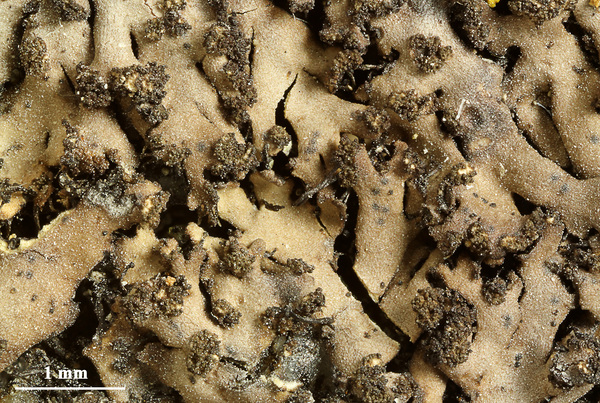

Felix Schumm - CC BY.SA 4.0
[1900], Schweiz, Kanton Luzern, Gloggenmatt südlich von Flühli, ca. 1000 m. Leg. F. Schumm, 12.09.1971, det. F. Schumm, conf. Ed. Frey 09.1971.


Felix Schumm – CC BY-SA 4.0
[1900], Schweiz, Kanton Luzern, Gloggenmatt südlich von Flühli, ca. 1000 m, an Silikatfelsen. Leg. F. Schumm, 12.09.1971, det. F. Schumm, conf. Ed. Frey 09.1971
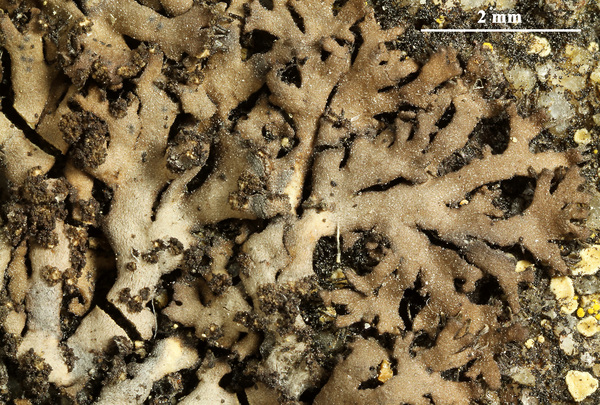

Felix Schumm – CC BY-SA 4.0
[1900], Schweiz, Kanton Luzern, Gloggenmatt südlich von Flühli, ca. 1000 m, an Silikatfelsen. Leg. F. Schumm, 12.09.1971, det. F. Schumm, conf. Ed. Frey 09.1971
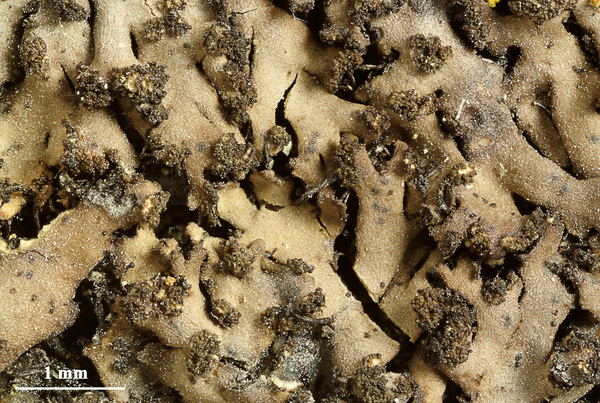

Felix Schumm – CC BY-SA 4.0
[1900], Schweiz, Kanton Luzern, Gloggenmatt südlich von Flühli, ca. 1000 m, an Silikatfelsen. Leg. F. Schumm, 12.09.1971, det. F. Schumm, conf. Ed. Frey 09.1971
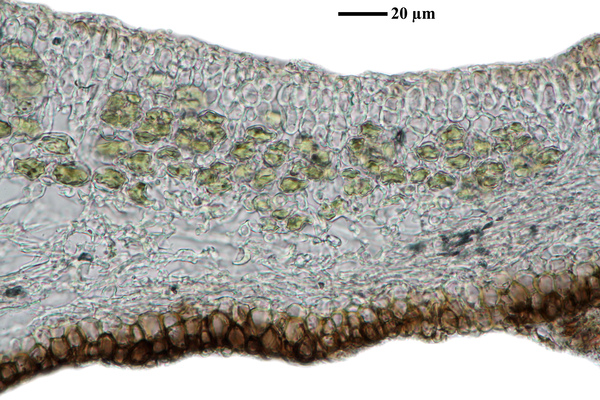

Felix Schumm – CC BY-SA 4.0
[1900], Schweiz, Kanton Luzern, Gloggenmatt südlich von Flühli, ca. 1000 m, an Silikatfelsen. Leg. F. Schumm, 12.09.1971, det. F. Schumm, conf. Ed. Frey 09.1971
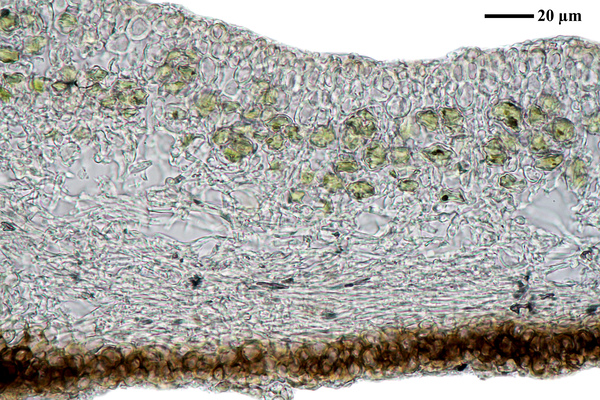

Felix Schumm – CC BY-SA 4.0
[1900], Schweiz, Kanton Luzern, Gloggenmatt südlich von Flühli, ca. 1000 m, an Silikatfelsen. Leg. F. Schumm, 12.09.1971, det. F. Schumm, conf. Ed. Frey 09.1971
Growth form: Foliose, narrow lobed
Substrata: rocks
Photobiont: green algae other than Trentepohlia
Reproductive strategy: mainly asexual, by soredia, or soredia-like structures (e.g. blastidia)
Commonnes-rarity: (info)
Alpine belt: rare
Subalpine belt: rather rare
Oromediterranean belt: extremely rare
Montane belt: rather rare
Submediterranean belt: rather common
Padanian area: absent
Humid submediterranean belt: rather rare
Humid mediterranean belt: very rare
Dry mediterranean belt: extremely rare

Predictive model
| Herbarium samples |


P.L. Nimis; Owner: Department of Life Sciences, University of Trieste
Herbarium: TSB (3207)
2002/07/12


Felix Schumm - CC BY.SA 4.0
[1900], Schweiz, Kanton Luzern, Gloggenmatt südlich von Flühli, ca. 1000 m. Leg. F. Schumm, 12.09.1971, det. F. Schumm, conf. Ed. Frey 09.1971.


Felix Schumm - CC BY.SA 4.0
[1900], Schweiz, Kanton Luzern, Gloggenmatt südlich von Flühli, ca. 1000 m. Leg. F. Schumm, 12.09.1971, det. F. Schumm, conf. Ed. Frey 09.1971.


Felix Schumm - CC BY.SA 4.0
[1900], Schweiz, Kanton Luzern, Gloggenmatt südlich von Flühli, ca. 1000 m. Leg. F. Schumm, 12.09.1971, det. F. Schumm, conf. Ed. Frey 09.1971.


Felix Schumm – CC BY-SA 4.0
[1900], Schweiz, Kanton Luzern, Gloggenmatt südlich von Flühli, ca. 1000 m, an Silikatfelsen. Leg. F. Schumm, 12.09.1971, det. F. Schumm, conf. Ed. Frey 09.1971


Felix Schumm – CC BY-SA 4.0
[1900], Schweiz, Kanton Luzern, Gloggenmatt südlich von Flühli, ca. 1000 m, an Silikatfelsen. Leg. F. Schumm, 12.09.1971, det. F. Schumm, conf. Ed. Frey 09.1971


Felix Schumm – CC BY-SA 4.0
[1900], Schweiz, Kanton Luzern, Gloggenmatt südlich von Flühli, ca. 1000 m, an Silikatfelsen. Leg. F. Schumm, 12.09.1971, det. F. Schumm, conf. Ed. Frey 09.1971


Felix Schumm – CC BY-SA 4.0
[1900], Schweiz, Kanton Luzern, Gloggenmatt südlich von Flühli, ca. 1000 m, an Silikatfelsen. Leg. F. Schumm, 12.09.1971, det. F. Schumm, conf. Ed. Frey 09.1971


 INDEX FUNGORUM
INDEX FUNGORUM
 GBIF
GBIF
 DOLICHENS
DOLICHENS
